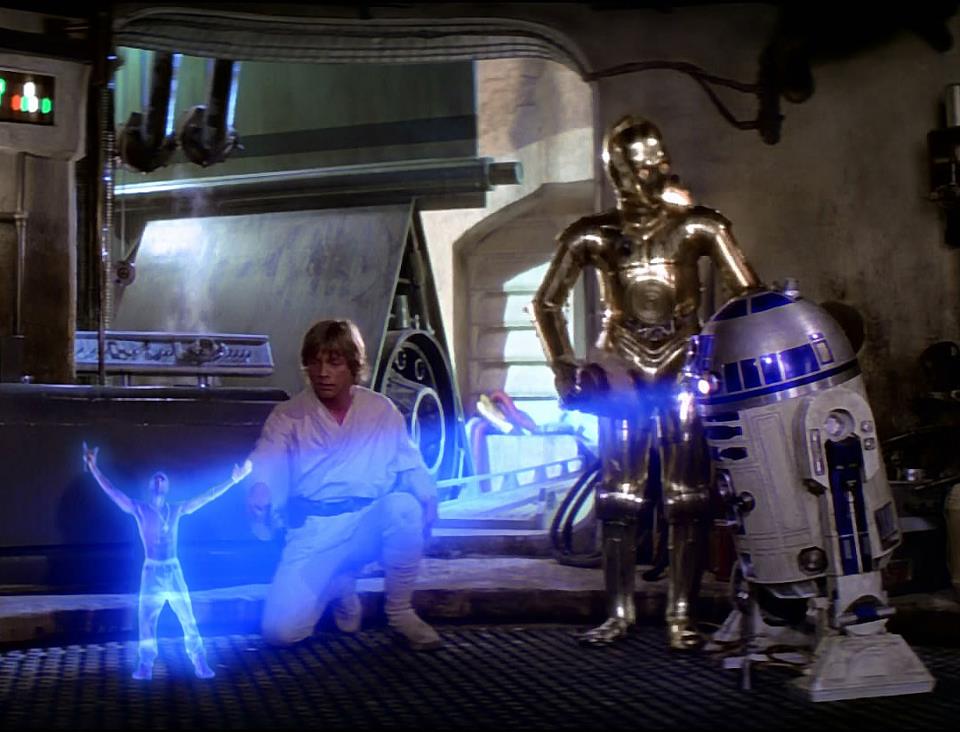Reality is a computer projection: physicists
October 4, 2012

Is our reality a projection of information, like the hologram image of Princess Leia projected by R2D2 in Star Wars? (Credit: Lucasfilm)
Whatever kind of reality you think you’re living in, you’re probably wrong. The universe is a computer, and everything that goes on in it can be explained in terms of information processing, speculates New Scientist in a special issue on What is reality?
“Quantum physics is almost phrased in terms of information processing,” says Vlatko Vedral of the University of Oxford. “It’s suggestive that you will find information processing at the root of everything.”
In fact, every process in the universe can be reduced to interactions between particles that produce binary answers: yes or no, here or there, up or down. That means nature, at its most fundamental level, is simply the flipping of binary digits or bits, just like a computer. The result of the myriad bit flips is manifest in what we perceive as the ongoing arrangement, rearrangement and interaction of atoms — in other words, reality.
According to Ed Fredkin of the Massachusetts Institute of Technology, if we could dig into this process we would find that the universe follows just one law, a single information-processing rule that is all you need to build a cosmos. In Fredkin’s view, this would be some form of “if-then” procedure; the kind of rule used in traditional computing to manipulate the bits held by transistors on a chip and operate the logic gates, but this time applied to the bits of the universe.
Proving that the universe is a quantum computer is a difficult task. Even so, there is one observation that supports the idea that the universe is fundamentally composed of information. In 2008, the GEO 600 gravitational wave detector in Hannover, Germany, picked up an anomalous signal suggesting that space-time is pixelated. This is exactly what would be expected in a “holographic” universe, where 3D reality is actually a projection of information encoded on the two-dimensional surface of the boundary of the universe (New Scientist, 17 January 2009, p 24).
This bizarre idea arose from an argument over black holes. One of the fundamental tenets of physics is that information cannot be destroyed, but a black hole appears to violate this by swallowing things that contain information then gradually evaporating away. What happens to that information was the subject of a long debate between Stephen Hawking and several of his peers. In the end, Hawking lost the debate, conceding that the information is imprinted on the event horizon that defines the black hole’s boundary and escapes as the black hole evaporates.
This led theoretical physicists Leonard Susskind and Gerard’t Hooft to propose that the entire universe could also hold information at its boundary — with the consequence that our reality could be the projection of that information into the space within the boundary.